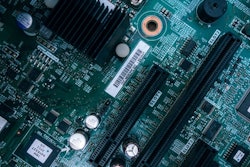
The global supply chain is in a state of crisis. The holiday season perennially exposes supply chain weaknesses, but this set of circumstances isn’t limited to Black Friday crunches or toy sell-outs. It’s an end-to-end gridlock catalyzed by the pandemic and exacerbated by a hasty and often inefficient shift to a digital business landscape. Compounding factors include massive job vacancies, shortages of shipping containers and clogged ports. In short, it’s a mess.
In response to the crisis, the U.S. Department of Defense and the Pentagon are launching a 2-year effort with a department-wide supply chain resiliency working group that will try to address systemic barriers to visibility and operational efficiency. That’s a worthy effort, and the long-term survival of the supply chain likely depends on it. And yet, retailers don’t have two years. Manufacturers don’t have two years. Distributors don’t have two years. Warehouse workers don’t have two years. And, consumers don’t have two years.
The good news is, the technology already exists to address many of the most pressing issues facing the supply chain, including managing distribution centers, visibility, productivity, accuracy, recruiting and training.
The solution is, like the Internet of Things (IoT), the Industrial IoT (IIoT) has potential to provide companies with advanced warehousing, logistics and transportation solutions, while ensuring seamless process management across all links of complex supply chains. Implement and leverage technologies like IIoT and digitization to revolutionize supply chain operations. Businesses that survive – and perhaps even thrive in – this uncertain landscape will be the ones willing to embrace these technologies.
How IIoT is shaping the supply chain
Visibility and data. You can’t manage what you can’t see. An IIoT technology coupled with artificial intelligence (AI) offer a tool to improve the transparency businesses’ need to understand their existing processes in supply chain operations, discern how to improve them and optimize for success. Placing IoT sensors in the shipping containers can provide regular information on the containers’ position, report environmental conditions and give real-time updates on the temperatures and humidity of a shipment. With the GPS and beacons, shipping companies can track their shipment and ensure shipped goods are delivered on time with little margin for error. With IIoT, visibility comes at both the macro and micro levels by connecting machines, devices, workers, and systems while maximizing uptime, deepening insights into end-to-end supply chain process.
Productivity and efficiency. The supply chain industry – like many other industries – is facing a massive worker shortage. Those who are still on the job are overtaxed and burned out. Instead of simply asking for them to do more, why not provide the technology that empowers them to do more with less? That’s where IIoT can be leveraged. It connects machines, devices, workers and systems, maximizing uptime by measuring and offering deepening insights. Businesses can collect data on picking, packing, routing, receiving and shipping and analyze to make better decisions to improve labor efficiency and machine precision. Businesses can easily identify gaps and eliminate inefficiencies, working toward peak productivity while accommodating worker shortage and reducing burnout.
Automation and modernization. The modern supply chain is all about speed and accuracy. Key elements of IIoT technology such as asset tracking, predictive maintenance and remote production control play a critical role in supply chain automation while lowering operational costs. With automation, manual processes and steps can be removed or replaced to be more operationally efficient and refocus workers toward higher priority and critical projects. Through the adoption of IoT, devices, machines, robots and collaborative robots (cobots) can operate collaboratively with the labor workforce to reduce repetitive tasks that are time-consuming or error-prone and maintain optimum production.
The bare minimum goal: bridge the gap over the next two years until a long-term solution is in place. And yet, when the right IIoT solution is implemented well, it can do so more than that. Investing in visibility, productivity and automation now can provide much-needed relief for businesses, employees, retailers and consumers alike – and those businesses that get this right first will be at an advantage. The technology is here to embrace the Supply Chain of the Future and Supply Chain 4.0.




















